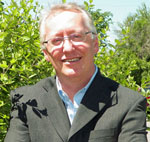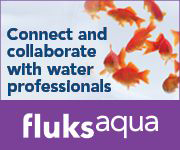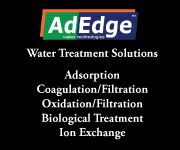Visit https://www.naylornetwork.com/cww-nwl/articles/index-v2.asp?aid=380460&issueID=40426 to view the full article online.
|
Visit https://www.naylornetwork.com/cww-nwl/articles/index-v2.asp?aid=380466&issueID=40426 to view the full article online.
|
Visit https://www.naylornetwork.com/cww-nwl/articles/index-v2.asp?aid=380302&issueID=40426 to view the full article online.
|
There are a few priority topics our Committees have identified as being timely and important that we’d like to expand on. Visit https://www.naylornetwork.com/cww-nwl/articles/index-v2.asp?aid=380193&issueID=40426 to view the full article online.
|
Visit https://www.naylornetwork.com/cww-nwl/articles/index-v2.asp?aid=380189&issueID=40426 to view the full article online.
Visit https://www.naylornetwork.com/cww-nwl/articles/index-v2.asp?aid=380195&issueID=40426 to view the full article online.
|
Environment and Climate Change Canada will be collecting more contextual information on releases to water by adding the reporting of non-detect and concentration values to the National Pollutant Release Inventory (NPRI) for the 2016 reporting year. The change is intended to improve the understandability of NPRI data on water releases by providing more contextual information, to address comments raised by data users during the NPRI Data Users’ Workshop in 2013 and by other data users within Environment and Climate Change Canada.
The Reporting Guidance for the NPRI states that "An indication that a reportable substance is below the method detection limit (MDL) is not equivalent to stating that the substance is not present."
Therefore, if it is known that a substance is a concentration equivalent to half of the MDL should be used. It does state that if all samples are negative and there is no reason to believe the substance is present no value is required.
The contextual information will clarify how a concentration is reached – for example if it was an actual measurement, based on an emission factor or half the MDL. This would provide context for those interpreting the results, which theoretically would clarify the reliability of the data reported.
Enviornment Canada has shared with CWWA a draft of what the reporting will look like, and we are consulting with our Wastewater Committee and will submit comments on the proposal.
Environment Canada will also reduce the reporting threshold for Cobalt for the 2016 reporting year. The reporting threshold will be reduced to a 50 kg manufacture, process or other use threshold, and 0.1% concentration threshold, commencing with the 2016 reporting year – it was previously included at the standard 10 tonne threshold.
As cobalt is often processed through the wastewater treatment facility and ultimately discharged in either biosolids or effluent some facilities may be required to begin to report on cobalt.
|
Portal website Visit https://www.naylornetwork.com/cww-nwl/articles/index-v2.asp?aid=380266&issueID=40426 to view the full article online.
|
Visit https://www.naylornetwork.com/cww-nwl/articles/index-v2.asp?aid=380272&issueID=40426 to view the full article online.
|
Visit https://www.naylornetwork.com/cww-nwl/articles/index-v2.asp?aid=380226&issueID=40426 to view the full article online.
|
Visit https://www.naylornetwork.com/cww-nwl/articles/index-v2.asp?aid=380228&issueID=40426 to view the full article online.
|
Visit http://eadocsoftware.com/ to view the full article online.
|
This division staffs the functions of both the East Hants Water Utility and Wastewater Treatment operations. Overall, this involves the operation of two Water Treatment Plants, an Engineered Spring, a Bulk Water Station, and three Wastewater Treatment Plants. In addition to the operating sites, there are a number of supporting pieces of infrastructure that are managed by this division which include, 4 Water Towers, 28 Lift Stations, 349 Fire Hydrants, and an extensive underground piping network. Visit https://www.easthants.ca/ to view the full article online.
|
The EOCP's objective is to protect human health, the environment, and the investment in facilities through increased knowledge, skill and proficiency of the members of the Program in all matters relating to water treatment and distribution and wastewater collection, treatment, and disposal. Visit https://www.naylornetwork.com/cww-nwl/articles/index-v2.asp?aid=380353&issueID=40426 to view the full article online.
|
FluksAqua is an innovative online community created by a dedicated group of water and wastewater operators for their peers, people like you. FluksAqua connects you with colleagues from your region and all over the world. FluksAqua facilitates a constant and interactive flow of information between operators, professionals, and members alike who work together to innovate and create new approaches to solve our issues, big or small. We are creating a global network of water and wastewater management specialists, technicians and engineers to promote awareness, sustain change, and increase knowledge about water and wastewater management. Visit https://www.fluksaqua.com/en/ to view the full article online.
|
Visit https://www.naylornetwork.com/cww-nwl/articles/index-v2.asp?aid=380383&issueID=40426 to view the full article online.
|
Visit https://www.naylornetwork.com/cww-nwl/articles/index-v2.asp?aid=380308&issueID=40426 to view the full article online.
|
|
Ground Water
Twenty-one per cent of Canadians polled rank climate change as the number 1 threat to Canada's fresh water supply, up significantly from 2010 when just seven per cent rated climate change a top concern, a survey released by RBC suggests Visit http://www.groundwatercanada.com/news/climate-change-top-threat-to-fresh-water-in-canada-survey-3248#sthash.GzyVK58a.dpuf?custnum=22214639702&title=&utm_source=E912&utm_medium=email&utm_campaign=160519N to view the full article online. |
|
Water Canada
The federal government delivered its 2016 budget on World Water Day. Tabled on March 22, 2016, it included welcome water-related commitments, including funding to rebuild freshwater science capacity, address Great Lakes phosphorus loadings, and ensure clean drinking water in indigenous communities. However, the main focus was on infrastructure. Visit http://watercanada.net/2016/the-case-for-federal-investments-in-water-innovation-and-technology/ to view the full article online. |
|
Water Canada
The City of Guelph has released its new, draft Water Efficiency Strategy and is inviting the public review and provide feedback. Since May 2015, the municipality has been engaging the public to provide input into what the water efficiency programs that have been most effective and new ideas to be even more aggressive in water efficiency and conservation. Water conservation has been an integral part of water management within the City of Guelph for almost 20 years. Visit http://watercanada.net/2016/guelph-releases-draft-water-efficiency-strategy/ to view the full article online. |
|
WEF
A new economic benefits analysis of the impacts of increased funding for the Drinking Water and Clean Water State Revolving Funds (SRF), released today by the Water Environment Federation (WEF) and the WateReuse Association, has revealed that a requested $34.7 billion of federal SRF spending will generate $102.7 billion in total economic input and create more than 500,000 U.S. jobs. Visit https://www.naylornetwork.com/cww-nwl/articles/index-v2.asp?aid=379763&issueID=40426 to view the full article online. |
|
CBC
The City of Ottawa is laying out a 20-year plan to protect waterways, aquifers and wetlands — everything from making sure new development doesn't lead to erosion to working with landowners about the runoff from their properties. Visit http://www.cbc.ca/news/canada/ottawa/ottawa-water-strategy-environment-committee-1.3581512 to view the full article online. |
|
680 News
A Vancouver student who won the top prize at the world’s largest high school competition says four years of doing experiments taught him that patience and passion are keys to success. Austin Wang, 18, won a US$75,000 award for engineering genetically modified E. coli bacteria that speeds up the process of converting organic waste into electricity. Visit http://www.680news.com/2016/05/16/vancouver-teen-engineers-bacteria-to-win-top-prize-at-biggest-school-contest/ to view the full article online. |
|
Journal of Commerce
Two researchers at the University of British Columbia (UBC) have developed a tool that will help the province's utilities in small and medium-sized communities prioritize water system construction and rehabilitation projects. Visit http://journalofcommerce.com/Infrastructure/News/2016/5/UBC-helps-smaller-utilities-up-water-infrastructure-game-1015466W/ to view the full article online. |





















